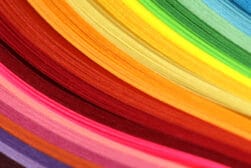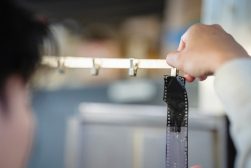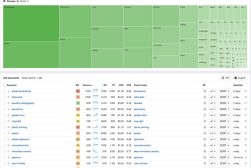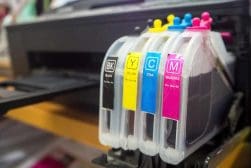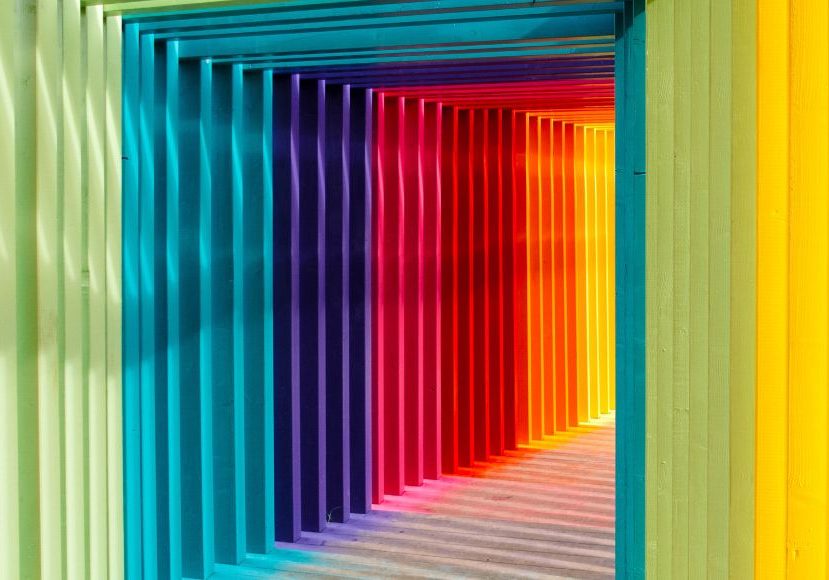
What Is Lab Color Space in Printing & Photoshop?
Uncover the intricacies of Lab Color Space when printing and using Photoshop with this guide to mastering color accuracy and quality in digital imagery.
Learn | Printing Guides | By India Mantle
This guide to Lab Color will help you understand how colors work in printing and Photoshop.
I know colors matter to you, whether you are a photographer, a designer, or deep into the printing industry.
Luckily, Lab Color space is the key to getting those color hues right.
Don’t worry – you don’t need to know all the intricacies of color theory.
Today, I’ll provide you with much-needed information about Lab Color space, how to use tools like the color picker, and why a Lab Color calculator is important. So, keep scrolling.
Table of Contents
What Is Lab Color Space?

Lab Color space, sometimes called CIELAB, is a color model similar to the CMYK, RGB, sRGB, or Adobe RGB color spaces.
Yet, it’s primarily designed to represent color in a way almost the same as the human color perception and human vision.
It represents a link between the technical colors and the richness of the human visual experience.
So, it’s the closest and the most accurate color model to the natural colors we receive through our human perception.
Mainly, RGB and CMYK represent colors by giving a percentage of how much of each color there is.
In the case of RGB images, it’s the triadic colors red, green, and blue. Similarly, for CMYK, it’s cyan, magenta, yellow, and black.
When it comes to the Lab Color Space, it divides colors into three primary components running along three color axes. As such, it mimics the way human vision perceives colors.
Mainly, L is for lightness of color, ranging from black to white.
Moreover, a is the color difference value among the red to green axis, where the green color is the negative value and red is the positive value.
Comparably, b is the value running along the blue-to-yellow axis where blue represents the negative value and yellow represents the positive value.
Such a separation between the lightness and color channels matches how color components are perceived by the human eye, aligning with human color perception.
While the other color models are device-dependent, Lab Color space isn’t.
Being device-independent makes Lab Color space fantastic for ensuring consistent color representation across various devices and media.
How To Use Lab Color Picker in Photoshop?
In Photoshop, you can work with Lab Color values, making adjustments using the software’s color tools and features.
Through the color picker, you can identify and manipulate complementary colors to create striking compositions.
How Much Do You REALLY Know About Photography?! 🤔
Test your photography knowledge with this quick quiz!
See how much you really know about photography...

Here’s how to do it.
Step #1: Choose the Lab Color Mode
There are two simple methods to switch to Lab Color mode on Photoshop. Both of them are done through the top menu.
The first method starts by opening the image you want to work on. Then, you change its color mode by pressing Image > Mode > Lab Color.
As for the second method, you don’t need to open an image to try.
All you should do is select Edit > Convert to Profile. In the window that opens, change the Profile tab to “Lab Color” and click OK.
Step #2: Adjust Color in Lab Color Mode
Once you convert the image to Lab Color mode, you should spot four models in the Channels panel, including negative and positive values.
The top tab displays a view of all the channels together, while the other three display Lightness, a, and b.
You may start adjusting the three color axes channels independently: L (lightness), a (green-red axis), and b (blue-yellow axis).
To make such adjustments, you can use various Photoshop tools and features, including Curves, Levels, or Color Balance.
Turning off a channel’s visibility (the little eye icon) allows you to see the remaining channels on the larger canvas view.
If the Channels panel isn’t visible on your Photoshop interface, go to the top menu and tab Windows > Channels.
- Lightness Channel: This channel only contains information about how light or dark a certain image is (perception of lightness as a grayscale image).
- a Channel: Responsible for color information on the red to green color scale, the “a” channel shows only those hues of an image.
- b Channel: Likewise, this channel displays certain hues of an image. In the “b” channel case, it’s blue to yellow.
Viewing Color Values
You may use the Eyedropper tool to know the Lab Color value of a specific pixel in your image.
All you need to do is press the I key or select the Eyedropper tool from the toolbar. Then, click on a pixel, and the info panel should display the Lab values for this pixel.
Step #3: Convert the Image Back to RGB
After you finish working, you may need to convert the image back to RGB color mode for output or display purposes.
To do so, you can repeat the same steps. Go to Image > Mode > and choose RGB Color this time.
What Is a Lab Color Calculator?
Lab Color calculator is also known as Delta E calculator or color difference calculator.
It’s a valuable tool used to measure the differences between colors in Lab Color space, ensuring uniform color profiles among various applications.
Such a tool helps professionals in many industries ensure color accuracy and consistency. It also aids in maintaining high color standards in design, manufacturing, and other applications.
The whole concept behind this type of calculator is providing a numerical value representing how colors may differ from each other. Here’s a general idea of how it works.
- Color Input: You input the Lab Color values of two different colors into the calculator. These values include the “L,” “a,” and “b” channels.
- Calculate Delta E: The calculator uses a mathematical formula to determine the color differences between your input shades.
- Delta E Value: The result is a numerical value representing the color difference. Basically, the higher this value, the more different the two colors are.
- Delta E Value Range: A Delta E value of zero means that the two colors are identical, while larger values indicate greater differences.
Common Lab Color Examples
To better understand the practical applications of Lab Color space, you need to take a look at some examples of how these tools can be used in real-life scenarios.
Whether in the field of graphic design, photography, image editing, or company branding, Lab Color space is essential.
1. Photography: Adjusting Color Balance

Lab Color can greatly benefit photographers looking to fine-tune digital images by adjusting the primary colors.
For example, a photo of a sunset can appear too warm or too dark for their liking, altering its desired visual impact.
By shifting the values in the Lab Color picker, you can manipulate objects’ colors in images, making them appear more natural without affecting the overall brightness.
Using Lab Color, you can easily make precise adjustments to images, such as:
- Correcting color balance
- Removing color casts
- Enhancing specific color components
2. Printing Industry: Managing Color Reproduction
When it comes to the printing process, accurate color reproduction is vital. Therefore, printers use Lab Color values to ensure the colors in printed materials match the intended color palette.
As mentioned earlier, Lab Color space provides a device-independent method for interpreting colors, so there’s no need for special printing equipment.
This helps achieve consistent color quality in magazines, brochures, posters, packaging, and other printed materials.
Take the HARD Photography Quiz! 🤯
Now it's time to really test your photography knowledge!
(99% of people can't get all the questions right...)

Such a level of precision is highly important for the commercial printing process, where the smallest color variations can greatly impact the end product.
3. Graphic Design: Creating Brand-Consistent Graphics
Graphic designers usually work with established companies to ensure their brand colors are uniform.
That’s why they rely on Lab Color values to maintain consistency in primary colors across various media, from digital displays to printed materials.
As a graphic designer, if you want to incorporate a brand’s specific color into a design, you may use the Lab Color value to confirm the exact match.
So, regardless of the output medium, you can be absolutely positive that your designs match perfectly with the brand’s international standards.
4. Web Design: Ensuring Accessibility
Web designers also use Lab Color values to ensure primary colors on the website are accessible to individuals with color vision deficiencies.
By selecting the right colors with the aid of Lab Color space, designers can create color schemes that are easy to read for all users.
As a result, this enhances the inclusivity of their web designs.
5. Fashion and Textile Industry: Color-Matching
In the fashion industry, the Lab Color space and its absolute color coordinates also play a significant role. It’s mainly used for precise color matching in textiles and garments.
Such color-matching ability is crucial for designers and manufacturers as they dye fabrics. That’s because it helps them ensure clothing items meet exact color specifications.
Consequently, this results in uniform and consistent color shades across production lines.

6. Interior Design: Color Selecting
Just like in the fashion industry, matching colors for space interiors is crucial.
That’s why interior designers use Lab Color values to select paint colors, textiles, and decor elements that go together perfectly within a space.
As a result, they confirm that the colors they choose match optimally with the design concept and create aesthetically pleasing surroundings.
7. Other Industries
Controlling the color quality of products applies to many industries. This includes automotive, ceramics, plastics, food and beverages, etc.
On top of that, maintaining a consistent product appearance is essential for the human perception of consumers. That’s when Lab Color space comes in handy.
Generally, it helps ensure the colors of manufactured products are uniform and meet quality standards.
For example, the food and beverage industry uses Lab Color space to ensure the products’ colors match consumer expectations.
Consequently, it contributes to the visual appeal of these products.

Check out these 8 essential tools to help you succeed as a professional photographer.
Includes limited-time discounts.
As the Content Manager of Shotkit, India Mantle brings with her a lifelong love for photography that she developed during her childhood, watching her father document their family moments with his Nikon EM. In her free time, you find her enjoying the awe-inspiring natural beauty of her home, Northern Rivers, Australia.





